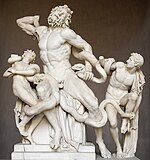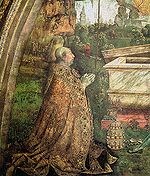Vatican Apostolic Archive

The Vatican Apostolic Archive (Latin: Archivum Apostolicum Vaticanum; Italian: Archivio Apostolico Vaticano), formerly known as the Vatican Secret Archive, is the central repository in the Vatican City of all acts promulgated by the Holy See. The pope, as the sovereign of Vatican City, owns the material held in the archive until his death or resignation, with ownership passing to his successor. The archive also contains state papers, correspondence, account books, and many other documents that the church has accumulated over the centuries. Pope Paul V separated the Secret Archive from the Vatican Library, where scholars had some very limited access, and the archive remained closed to outsiders until the late 19th century, when Pope Leo XIII opened the archive to researchers, more than a thousand of whom now examine some of its documents each year.
Excerpt from the Wikipedia article Vatican Apostolic Archive (License: CC BY-SA 3.0, Authors, Images).Vatican Apostolic Archive
Rampa dell'Archeologia,
Geographical coordinates (GPS) Address Nearby Places Show on map
Geographical coordinates (GPS)
| Latitude | Longitude |
|---|---|
| N 41.904722222222 ° | E 12.454722222222 ° |
Address
Musei Vaticani
Rampa dell'Archeologia
00120 , Vatican City
Vatican City
Open on Google Maps









